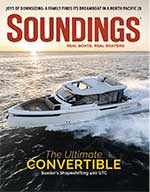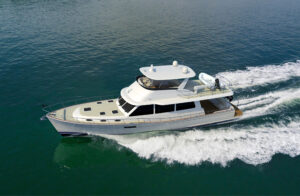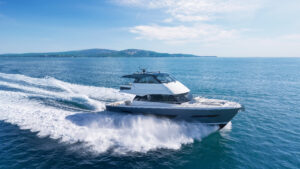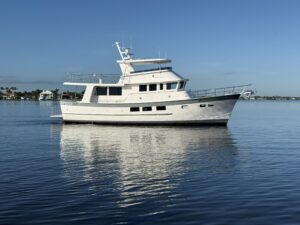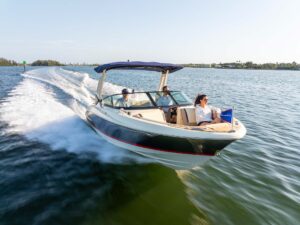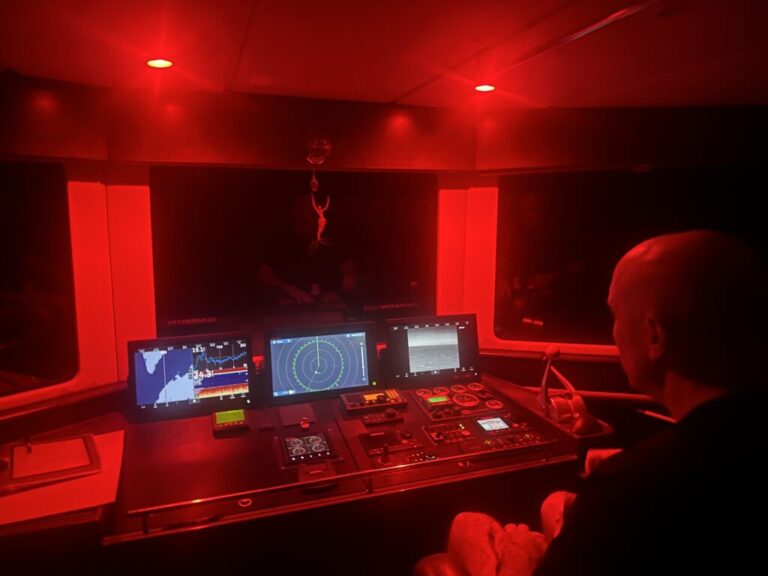
A Boston Whaler introduced me to the world of boating around the time I learned to walk. Mine was an old Sakonnet with a wooden center console and a single Yamaha outboard that wouldn’t hold a candle to the standard power options on most of today’s boats. Nevertheless, the barebones vessel reliably powered my family around the coast of Rhode Island for many years, and even though it was an older hull, I’ve never felt safer on a boat to this day.
That boat looked different from the craft the company is producing today. I thought about that when I boarded Whaler’s new 280 Vantage at the New York Boat Show in January. Unlike that old 17-footer I grew up on, this model—an open dayboat for active families and fishermen—is equipped with all the modern features and systems boat owners have come to expect, and then some.
The 280 will replace Whaler’s 270 Vantage. While the 280 has an extra foot of LOA, the dual-console model has a similar running surface to the 270, even though its 21-degree deadrise hull has been redesigned. Whaler chose a more traditional bow shape and added Carolina flare, which is a departure from its classic square-hull design. “This gives the hull a much more seaworthy appearance, and it also does a better job shedding water away from the hull when running offshore, making for a drier ride,” says Roberto Garza, director of engineering. In classic Boston Whaler fashion, the boat is reportedly unsinkable because it packs 600 pounds of foam.
Standard power is twin 250-hp V8 Mercury Verados, which should make for a top speed of 43 to 45 knots, according to Whaler. That power is more than enough for entry-level boaters, but there are other packages for more experienced drivers. Max-rated power is a pair of 400-hp motors that can deliver a top speed of 54.2 knots, according to the builder. Options include Mercury joystick piloting and built-in autopilot.
One of the first things that stood out to me as I walked through the cockpit was the dive door, which comes standard in this new model. The door is secured by large stainless steel latches engineered by Boston Whaler and designed for longevity. The cockpit also has an integrated windshield frame and space-optimizing features like a flip-out stern seat that’s very easy to maneuver. For entertaining, there is a standard sink that can be upgraded to a grill. For fishing, there are two 25-gallon fishboxes, a 19-gallon livewell and seven rod holders.
Wraparound seating in the bow provides space for multiple guests. There is also a ladder off the bow and an integrated shower head.
According to Whaler, the 280 is suitable for more than just coastal cruising. “It will have no problem at all handling most coastal conditions. And at 28 feet and with the improvements we made to the hull, the 280 does a great job handling waves and keeping passengers dry when heading offshore fishing,” Garza says. “This hull was put through the paces offshore for 100 hours and did very well in the conditions it was exposed to.”
Whalers have changed quite a bit since I was a kid, but one thing has remained constant: The builder still prioritizes tough, dependable design. Thinking back to all the fun I had on that old Whaler, which had no fancy features to speak of, I can only imagine the memories this hull will provide for the next generation of boaters.
Specifications
LOA (w/platforms): 29’1”
Beam: 9’6”
Displ.: 9,320 lbs.
Fuel: 185 gals.
Water: 20 gals.
Standard Power: (2) 250-hp Mercury Verados
This article originally appeared in the April 2020 issue.

